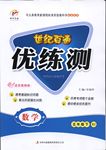题目内容
They came here by ________ sea and had a wonderful trip on ________ Queen Elizabeth Ⅱ.
- A.不填;the
- B.the;不填
- C.不填;不填
- D.the; the

 世纪百通主体课堂小学课时同步达标系列答案
世纪百通主体课堂小学课时同步达标系列答案 世纪百通优练测系列答案
世纪百通优练测系列答案 百分学生作业本题练王系列答案
百分学生作业本题练王系列答案An idea that started in Seattle's public library has spread throughout America and beyond. The concept is simple: help to build a sense of community in a city by getting everyone to read the same book at the same tome.
In addition to encouraging reading as a pursuit (追求) to be enjoyed by all, the program allows strangers to communicate by discussing the book on the bus, as well as promoting reading as an experience to be shared in families and schools. The idea came from Seattle librarian Nancy Pearl who launched (发起)the "If All of Seattle Read the Same Book " project in 1998. Her original program used author visits,study guides and book discussion groups to bring people together with a book, but the idea has since expanded to many other American cities, and even to Hong kong.
In Chicago, the mayor(市长)appeared on television to announce the choice of To Kill a Mockingbird as the first book in the "One Book, One Chicago" program. As a result, reading clubs and neighbourhood groups sprang up around the city. Across the US, stories emerged of parents and children reading to each other at night and strangers chatting away on the bus about plot and character.
The only problem arose in New York ,where local readers could not decide on one book to represent the huge and diverse population. This may show that the idea works best in medium-sized cities or large towns,where a greater sense of unity(一致)can be achieved .Or it may show that New Yorkers rather missed the point ,putting all their energy
And passion into the choice of the book rather than discussion about a book itself.
Ultinatel was Nancy points out,the level of sucicess is not meastured by how many people read a book,but by how many people are enriched by the process.or have enjoyed speaking to someone with whom they would not otherwise have shared a word.
【小题1】What is the purpose of the project launched by Nancy?
| A.To invite authors to guide readers. |
| B.To encourage people to read and share. |
| C.To involve people in communnity service. |
| D.To promote the friendship between cities. |
| A.They had little interest in reading. |
| B.They were too busy to read a book. |
| C.They came from many different backgrounds |
| D.They lacked support from the locat government |
| A.In large communities with little sense of unity |
| B.In large cities where libraries are far from home |
| C.In medium-sized cities with a diverse population |
| D.In large towns where agreement can be quickly reached |
| A.exchanged ideas with each other |
| B.discussed the meaning of a word |
| C.gamed life experience |
| D.used the same language |
| A.the careful selection of a proper book |
| B.the growing popularity of the writers |
| C.the number of people who benefit from reading. |
| D.the number of books that each person reads. |
( C )
In Denmark, parents are allowed to set up a new school if they are dissatisfied with the school in the area where they are living. Although these schools have to follow the national courses, they are allowed a lot of choice in deciding what to teach. Some of these new schools are called “small schools” because usually the number of pupils in them is only sixty, but a school has to have at least twenty-seven pupils.
Cooleenbridge School in Ireland, is a small school similar to the ones in Denmark, it was set up by parents who came from Holland, Germany, Czechoslovakia, England and other parts of Ireland. They came because they wanted to live in the countryside and to grow their own food. In June 1986, they decided to start a school. They managed to get an old, disused primary-school (小学) building and started with twenty-four children aged from four to twelve.
The teachers say, “The important thing in school is doing, not sitting.” And so the courses includes yoga(瑜伽), cooking, knitting, kite-making, music, fishing, drama (戏剧) and environmental(环境的) river studies, as well as reading, writing, maths and science.
【小题1】What are the rules for setting up a new school in Denmark?
| A.Parents are allowed to set up their own school. |
| B.The school has to follow the national courses. |
| C.The school has to have at least 27 pupils. |
| D.All of the above. |
| A.it was set up by parents who are not people of Denmark |
| B.it was taken as an example of this kind of “small school” |
| C.there were only twenty-four children |
| D.the pupils there were aged from 4 to 12 |
| A.It is set up by parents not by government. |
| B.It is free to decide what to teach. |
| C.The number of pupils in it is only sixty. |
| D.It has to have at least 27 pupils. |
| A.What we should do is teaching in the classroom, not sitting in the office. |
| B.Children should do more homework at home, not just sit in class to listen to the teachers. |
| C.Children should learn by themselves not rely on teachers. |
| D.Children should learn through practice not just from books. |
| A.yoga, cooking, knitting, kite-making, music, fishing, drama and environmental river studies, except reading, writing, maths and science |
| B.either yoga, cooking, knitting, kite-making, music, fishing, drama and environmental river studies, or reading, writing, maths and science |
| C.not only reading, writing, maths and science, but also yoga, cooking knitting, kitemaking, music, fishing, drama and environmental river studies |
| D.mainly yoga, cooking, knitting, kite-making, music, fishing, drama and environmental river studies, and supplemental (补充的) reading writing, maths and science |